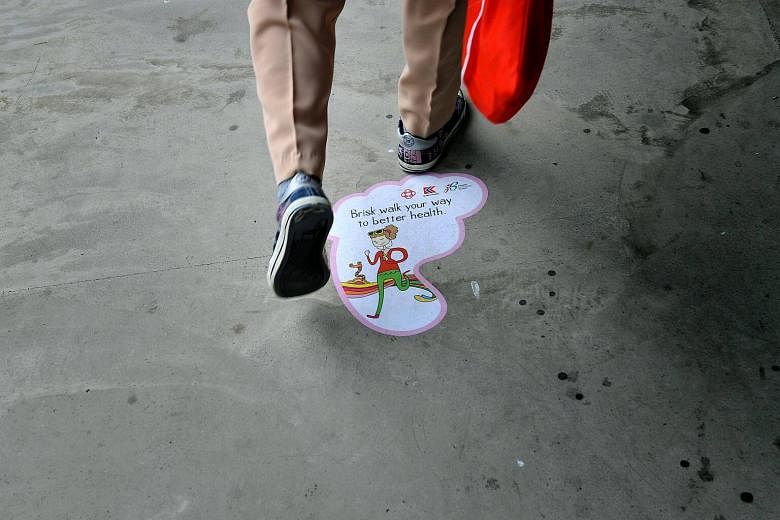All modern scribes of the walk are united on this one thing: it is not supposed to be fast.
Walking is, as the philosopher Frederic Gros said, "the best way to go more slowly than any other method that has ever been found."
American author Rebecca Solnit wrote in Wanderlust: A History Of Walking: "I like walking because it is slow, and I suspect that the mind, like the feet, works at about three miles an hour. If this is so, then modern life is moving faster than the speed of thought or thoughtfulness."
But sports scientist and walking expert Joanna Hall goes fast, at 4.4mph (7kmh) - "beyond that, it starts to look snatched".
One could conclude she has lost the poetry of the walk, but this would be wrong. When you start listening to your toes, your ankles, your hips, your chin, you are just making a different kind of poem.
There are four basic errors when it comes to the human walk, and they interrupt everything, from efficiency to posture to joint health.
1 MISTAKE: A PASSIVE FOOT
Start with the basics: your shoes. Trainers are best, with very flexible soles; too rigid and you won't be able to feel your entire foot.
They should have a boxy front rather than one that tapers, so you can feel every toe.
When you slap your foot on the ground, it negates all your ability to use the muscles at the back of your body, and loads all the work on to your hip flexors.
You should walk with great attention to your back foot, as though you are peeling it off the ground like very strong Velcro. Pay heed to the difference between each toe, as they touch and leave the ground.
You should be aware of your foot's contours, and this will activate your large posterior muscle chains, the hamstring and the glutes.
The hamstring has two functions, hip extension and knee flexion. One it enjoys - knee flexion - and the other, not so much.
If you stand on one leg and swing the other backwards and forwards, you can see this: your forward swing will be higher than your backward, and on the backswing you'll want to bend your knee.
But when the hamstring is properly "recruited" - when a movement activates a muscle - it has huge propulsive power, as well as making your glutes (butt muscles) do some of the work.
2 MISTAKE: FAILING TO HIP LIFT
A lot of people, thinking themselves on a "power walk", brace themselves, particularly their abs.
But you don't really want to be braced, you want to be taut. Bracing your abs and glutes makes you feel as if you're making an effort, but it silos your muscle groups.
Tautness, on the other hand, lengthens and connects them, activating the connective tissue (the fascia) that holds the show together.
Becoming taut is all in the hip lift. "You should imagine you're putting on a very expensive pair of tights," Ms Hall said, "inching up each leg very carefully, ending at the hips."
When you first start to follow this technique, her advice is to do three 10-minute walks every day; any longer than that, and you won't be able to concentrate.
3 MISTAKE: JUTTING OUT YOUR NECK
You ought to walk as if you are wearing very long diamond earrings, and you want everybody to be able to see the diamonds, rather than having them sitting on your collar bones.
When your head is forward, your shoulder girdle also rolls forward, which gives you an unappealing hunch, but more importantly, encourages the shoulder joint, which is a ball-and-socket joint, to behave like a hinge joint.
This not only makes your arms as good as useless in the business of moving you forward, but also stiffens the shoulders, which makes the spine rigid. The spine should be able to rotate.
4 MISTAKE: IGNORING YOUR ARMS
If you want to use your arms as agents of acceleration, you have to use more deliberation. Move your arms across to the centre of your body and then quite far back.
To reach your optimum pace - at which you burn the most calories - you need to establish your break point. This is the moment that you're going so fast that your walk deliquesces and you have to break into a jog.
Then drop down to about 5-10 per cent below that, and you're at your personal walking peak.
There are three phases to speeding up: use your toes in a more determined way, as if you're kicking off the back wall of a swimming pool; then concentrate on your hip lift and your glutes will propel you forward; finally, start to swing your arms, concentrating on the elbows - speeding up your arms will naturally make your walk faster.
THE GUARDIAN

